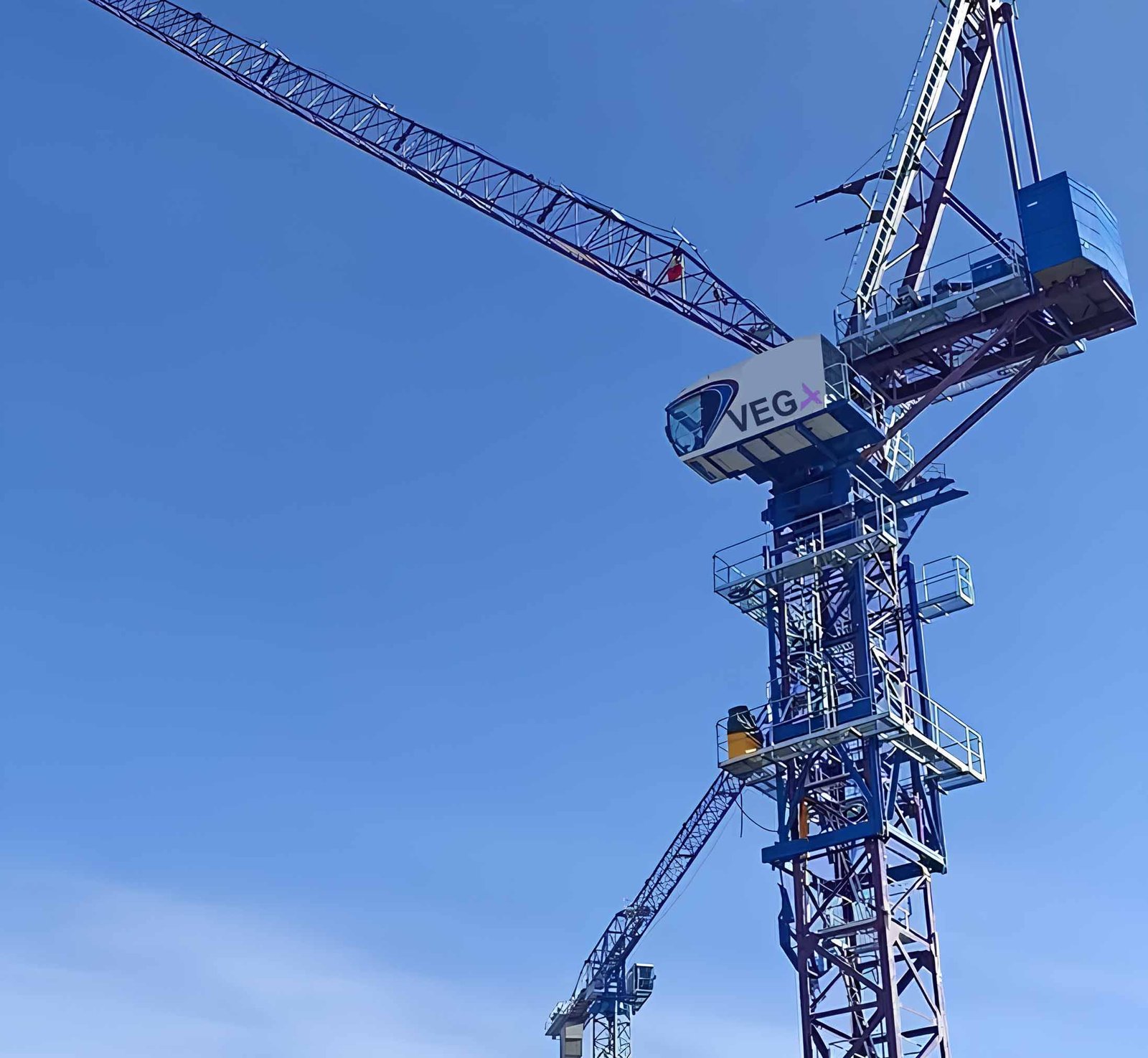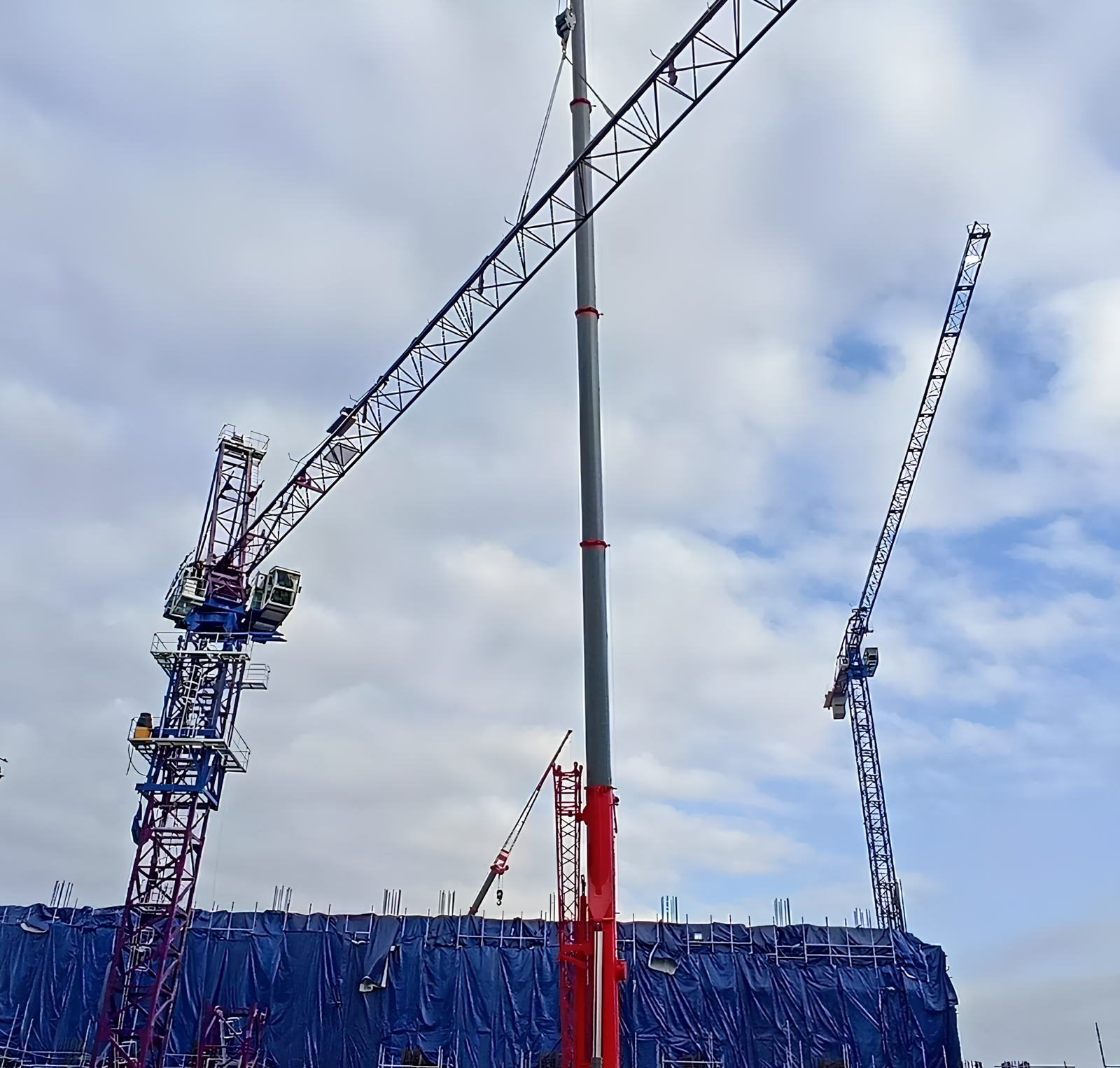
Luffing tower cranes are specialized equipment used in construction sites where high precision and space are critical. Their unique ability to move the jib (arm) up and down offers a range of benefits. But how exactly do these cranes work? Let's explore the luffing mechanism1 and how it compares to traditional tower cranes.
Luffing tower cranes2 use a luffing mechanism to adjust the jib’s angle, providing better maneuverability in tight spaces and making them ideal for urban construction sites.
Luffing tower cranes are built to improve the precision and flexibility of material lifting. The luffing mechanism allows the jib to move vertically, giving the crane greater adaptability, especially on congested construction sites. But how does this mechanism work, and how is it different from other cranes?
What Is the Luffing Mechanism of a Tower Crane?

The luffing mechanism is the key feature that distinguishes a luffing tower crane from other types. But how does it function?
The luffing mechanism adjusts the angle of the jib, allowing it to move upwards or downwards to lift materials with greater precision.
The luffing mechanism operates by using hydraulic cylinders3 to adjust the jib’s angle relative to the mast. Unlike traditional tower cranes, where the jib stays fixed at a horizontal position, the luffing crane's jib can move vertically, offering more flexibility when lifting materials in restricted spaces or at different heights.
Components of the Luffing Mechanism
- Hydraulic Cylinders: These control the jib’s movement, raising or lowering it as needed.
- Jib: The horizontal arm of the crane, which can change its angle with the luffing mechanism.
- Mast: The main vertical component that supports the entire structure of the crane.
| Component | Function |
|---|---|
| Hydraulic Cylinders | Control the jib’s vertical movement |
| Jib | The arm that lifts and moves materials |
| Mast | Provides stability and height to the crane |
The ability to move the jib makes luffing cranes ideal for sites where working space is limited, such as in urban environments.
What Is the Working Mechanism of a Tower Crane?

Tower cranes are crucial for high-rise construction projects, but how do they work?
Tower cranes4 use a fixed base and a rotating mast to lift heavy loads, providing stability and flexibility in construction sites.
The basic working mechanism of a tower crane involves a tall mast, a horizontal jib, and a hoist. The crane’s mast provides stability, while the jib extends out to lift and move materials. The hoist allows the materials to be raised or lowered, and the entire structure can rotate to position the load where needed.
Key Features of a Tower Crane’s Working Mechanism
- Mast: Acts as the primary support and allows for height adjustments.
- Jib: Carries the load horizontally.
- Hoist: Lifts materials vertically.
- Rotational Mechanism5: The crane can rotate 360 degrees for flexibility in positioning loads.
| Component | Function |
|---|---|
| Mast | Provides height and stability to the crane |
| Jib | Moves materials horizontally to the desired location |
| Hoist | Lifts materials vertically |
| Rotation Mechanism | Allows the crane to rotate and place loads precisely |
Unlike a luffing crane, the jib of a tower crane typically remains in a fixed horizontal position during operation.
What Is the Difference Between a Luffing Crane and a Tower Crane?

Luffing cranes and tower cranes share similarities, but they are not the same. What sets them apart?
The key difference is that a luffing crane has a movable jib, whereas a tower crane’s jib remains fixed during operation.
The primary difference between a luffing crane and a standard tower crane is the luffing mechanism. While a tower crane's jib remains stationary, a luffing crane can adjust its jib's angle. This movement allows the luffing crane to maneuver materials in tight spaces or when there are height restrictions.
Differences Between Luffing Cranes and Tower Cranes
- Jib Movement: Luffing cranes have jibs that can move vertically, while tower cranes have fixed jibs.
- Use Case: Luffing cranes are ideal for tight or constrained spaces, such as urban sites, while tower cranes are often used for larger, open areas.
- Flexibility: Luffing cranes offer more flexibility for varying load positions due to their adjustable jibs.
| Feature | Luffing Crane | Tower Crane |
|---|---|---|
| Jib Movement | Vertical adjustment possible | Fixed horizontal jib |
| Use Case | Ideal for confined spaces or high-rise buildings | Best for open spaces or larger construction sites |
| Flexibility | Highly flexible for different heights and positions | Limited flexibility in terms of positioning |
While both cranes play crucial roles on construction sites, their design and function serve different types of projects.
How Do Tower Cranes Not Tip Over?

Tower cranes are incredibly tall, but how do they stay grounded and not tip over?
Tower cranes remain stable due to a combination of a solid foundation, counterweights6, and the balance between the crane’s load and its lifting capacity.
Tower cranes stay upright due to their secure foundation, which is typically a large reinforced concrete slab. Additionally, counterweights are added to the crane’s base to balance the heavy loads it lifts. The balance between the weight of the load and the crane's stability ensures that it won’t tip over during operation.
Key Stability Features of Tower Cranes
- Reinforced Foundation7: A solid concrete base that supports the crane’s weight.
- Counterweights: Weights placed at the opposite end of the jib to prevent tipping.
- Load Control: The crane's lifting capacity is carefully matched to the load it is lifting.
| Feature | Function |
|---|---|
| Reinforced Foundation | Provides the necessary support to prevent tipping |
| Counterweights | Balance the crane and offset the weight of the load |
| Load Control | Ensures the crane is not overloaded during operation |
Together, these components work to keep the tower crane stable, even when lifting large or heavy loads.
What Causes a Crane to Tip?

Although tower cranes are designed to be stable, there are situations where a crane could tip over. What causes this?
Cranes tip over due to factors like overloading, unstable ground conditions, and improper balancing of counterweights.
Several factors can cause a crane to tip over, including overloading, where the crane is asked to lift more than its rated capacity. Unstable ground conditions can also lead to tipping if the crane’s foundation is not secure. Additionally, an improper distribution of counterweights or poor operational practices can increase the risk of a crane tipping over.
Causes of Crane Tipping
- Overloading: Lifting a load heavier than the crane’s capacity.
- Poor Foundation: An unstable or weak foundation can lead to tipping.
- Improper Balancing: Incorrect use of counterweights or poor load distribution.
- Strong Winds: Extreme weather conditions like high winds can destabilize the crane.
| Cause | Explanation |
|---|---|
| Overloading | Lifting too much weight beyond the crane's capacity |
| Poor Foundation | Weak or unstable ground can lead to tipping |
| Improper Balancing | Incorrect use of counterweights or load imbalance |
| Strong Winds | High winds can make the crane unstable |
By addressing these risks, crane operators can reduce the chances of accidents and ensure safe lifting operations.
Conclusion
Luffing tower cranes offer great flexibility and precision in construction, especially in urban environments. By understanding their luffing mechanism, differences from standard tower cranes, and factors contributing to stability, we can appreciate how these machines operate safely and efficiently.
-
Learn about the unique luffing mechanism used in tower cranes for better maneuverability. ↩
-
Understand the working principles and advantages of luffing tower cranes. ↩
-
Get to know the role of hydraulic cylinders in crane operations. ↩
-
Discover the mechanism of tower cranes used in large-scale construction. ↩
-
Find out how the rotational mechanism adds flexibility to tower cranes. ↩
-
Learn how counterweights ensure crane stability and safety. ↩
-
Understand the importance of a reinforced foundation in crane stability. ↩






